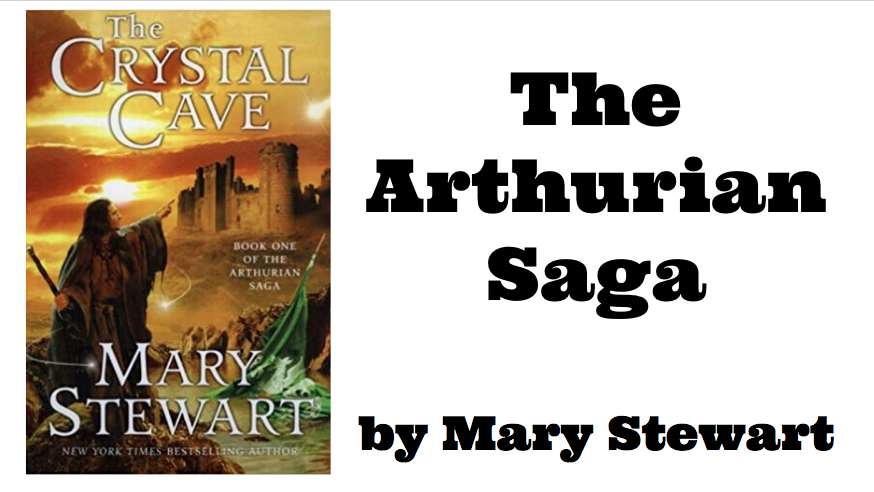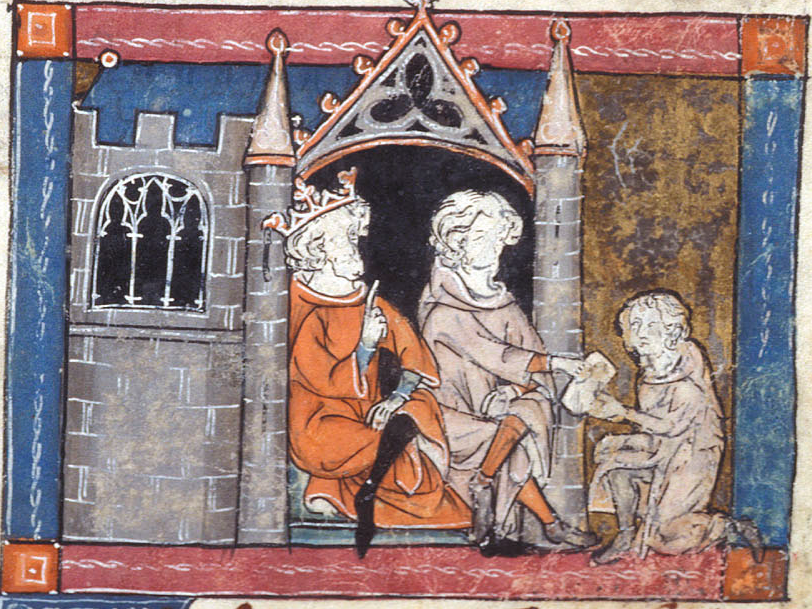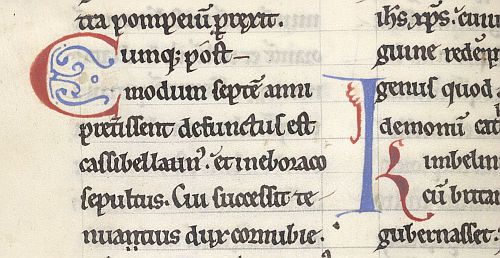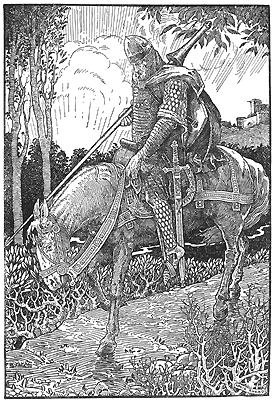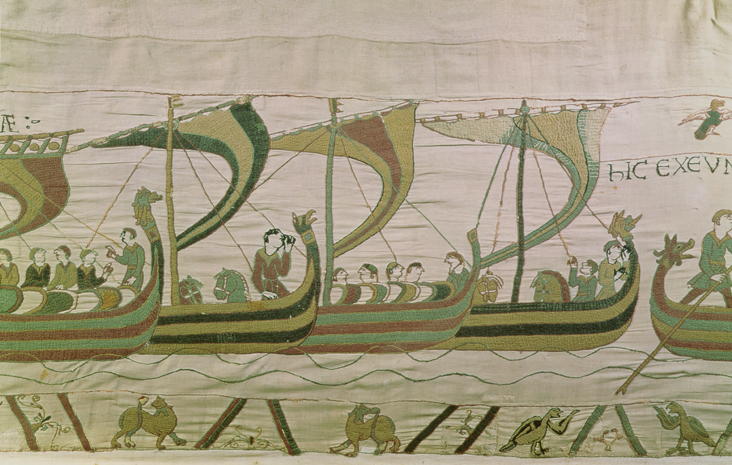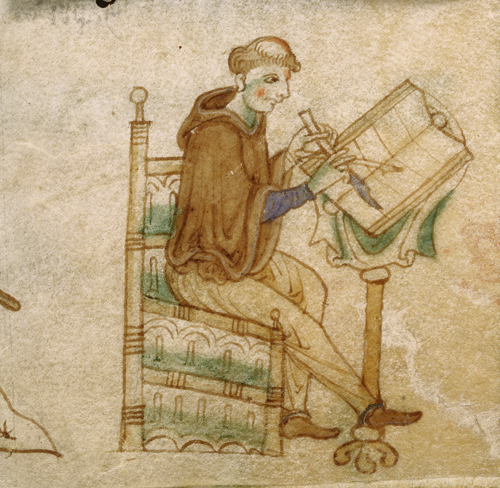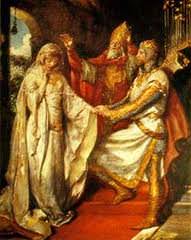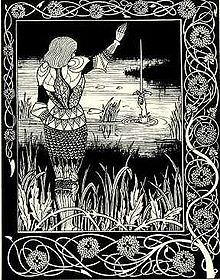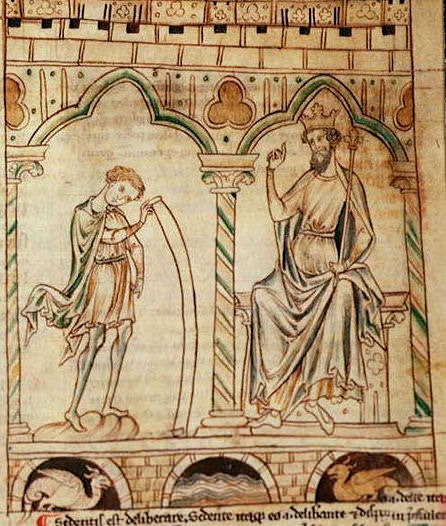The Phantom Book That Changed the Course of British History
Was England’s medieval history shaped by a book that never existed? Geoffrey of Monmouth’s Historia Regum Britanniae claims to be based on a lost Breton manuscript—but no one has ever found it, leaving historians to debate whether it was real or a masterful invention.
Medieval Reads: Creating stories with Mary Stewart and Geoffrey of Monmouth
Mary Stewart’s rather well known Arthurian trilogy-with-extra-volumes used a sub-Roman British setting, and placed an entirely twelfth century story of Arthur into it.
Historical Presents: Fake History, Material Culture and Collective Misremembering
How and why have material things (manuscript illuminations, printed books, turf-cut chalk drawings, elaborate costumes, immense figures in papier-mâché, oak, wicker, and even latex) preserved and embellished the memory of this foundation myth, alongside centuries of destruction, ridicule, indifference, and misunderstanding?
Magic, Technology and New Categories of Knowledge in the Central Middle Ages
This article proposes to discuss the extent to which medieval sources differentiate between an idea of applied technological knowledge, which could be close to our modern notion of science, and actual magic.
Geoffrey of Monmouth’s Portrayal of the Arrival of Christianity in Britain: Fact or Fiction?
I would like to suggest that an open-minded approach to a reading of the Historia Regum Britanniae shows that Geoffrey does not entirely deserve his reputation.
Crafting the witch: Gendering magic in medieval and early modern England
This project documents and analyzes the gendered transformation of magical figures occurring in Arthurian romance in England from the twelfth to the sixteenth centuries.
Approaches to paganism and uses of the pre-Christian past in Geoffrey of Monmouth and Snorri Sturluson
The dissertation is a comparative analysis of Geoffrey of Monmouth’s and Snorri Sturlusson’s descriptions of paganism and uses of pre-Christian history. What was the function of these pre-Christian narratives, and what apporaches were used by the two authors to construct a complete image of the past, acceptable to their contemporary societies?
Translating the Life of Merlin
This essay analyses three of the most prominent translations of the Life of Merlin, in order to discern how the translator’s differing methods have resulted in subtle, yet important, changes in meaning.
Mordred: Treachery, Transference, and Border Pressure in British Arthurian Romance
This study focuses on the question of how Mordred comes to be portrayed as a traitor within the British Arthurian context.
Writing conquest: traditions of Anglo-Saxon invasion and resistance in the twelfth century
Writing Conquest examines the ways in which Latin, Old English, and Middle English twelfth-century historical and pseudo-historical texts remembered and reconstructed three formative moments of Anglo-Saxon invasion and resistance…
The very first Anglo Saxon toast?
If the Historia should not be used to accurately retrace the history of Britain, it nonetheless features some of those tiny hints historians must seriously attend to.
The Public and Private Boundaries of Motherhood: Queen Igraine in Geoffrey of Monmouth’s Historia and Laȝamon’s Brut’
In literary criticism, awareness of transmission of tales between British and continental literature tends to encourage a view of some Arthurian narratives as more similar in tone, style, and language than they in fact are.
A Tale of the Rise of Law: Geoffrey of Monmouth’s The History of the Kings of Britain
Geoffrey of Monmouth’s The History of the Kings of Britain is a tale of the rise of law, suggesting that there can be no Britain without law – indeed, that Britain, like all nation-state constructs, was law or at least a complex network of interrelated processes and procedures that we might call law.
Mapping Scottish Identity in the Roman de Fergus
In the Roman de Fergus, a thirteenth-century verse romance in Old French, Guillaume le Clerc considers the consequences of Arthur’s assimilationist expansionism with a more focused attention to cultural difference and personal identity, again centered on the experience of a knight from Galloway, the eponymous
Queen Guinevere. A queen through time
According to Hopkins, “[Arthur’s] queen, Guinevere, is more elusive, less written about [than Arthur and his knights], and yet has been for centuries a central character playing a critical role in the rise and fall of the Round Table” (6). He goes on by characterizing her as “a key figure in the life of Camelot, this remarkable woman is seen variably as scholar, seductress, warrior, and dignified gentle beauty by the countless artists and writers who have depicted her. Who, then, was Guinevere?” (10) The purpose of this essay is to answer this question by looking at different texts and novels referring to the Queen.
Networking Scribes
This was the keynote paper given at the Celtic Studies Association of North America Annual Conference at the University of Toronto April 18 – 21, 2013.
Chaucer’s Arthuriana
The majority of medieval scholars, including Roger Sherman Loomis, argue that the popularity of the Arthurian legend in England was therefore on the wane in the latter half of the fourteenth century; as a result, the major writers of the period, such as John Gower and Geoffrey Chaucer, refrained from penning anything beyond the occasional reference to King Arthur and his court.
Aspects of the English royal succession, 1066-1199: the death of the king
The death of any ruler in the twelfth century, even if it were expected, caused a considerable amount of shock and disquiet amongst those who were left behind.
Sympathy for the Devil: the legend of Gog and Magog
In this discussion I want to consider a similar demonising of the ‘other’ in the form of the giants who were the indigenous inhabitants of Albion before the first civilised settlers arrived
‘In the Beginning’: The London Medieval Graduate Network Inaugural Conference
This is a summary of the The London Medieval Graduate Network Inaugural Conference by Rachel Scott. The conference was held on November 2nd at King’s College London.
The Arthur of the chronicles
Even if we cannot accept the claim made by Geoffrey in his introduction that his putative source was ‘attractively composed to form a consecutive andorderly narrative’, he certainly made extensive use ofWelsh genealogies andking-lists.
Many Motives: Geoffrey of Monmouth and the Reasons For His Falsification of History
It is clear to most modern historians who have studied Geoffrey’s Historia that its contents bear little to no resemblance to real events. Even in Geoffrey’s own lifetime many historians condemned the work.
Edward I and the Ritualization of English Royal Round Table Festivals
In the Annales Angliae et Scotiae, a chronicle written around the year 1312 by a monk from the abbey of St Albans, there is a description of the wedding ceremonies between King Edward I and Margaret of France, that took place on 10 September 1299.
The figure of Merlin in English literature from the beginnings to 1740
Merlin’s first appearance in early Welsh poetry as prophet and seer was considerably expanded by Geoffrey of Monmouth who was the first to associate him with the saxon and British kings of England, particularly Arthur.
“Hic Facet Arthurus, Rex Quondam, Rexque Futurus:” The Analysis of Original Medieval Sources in the Search for the Historica King Arthur
The heroic tales of the legendary King Arthur have survived throughout many centuries. Modern society has learned of this celebrated figure through oral and literary tradition, such as the works of Geoffrey of Monmouth’s pseudo-history Historia Regum Britanniae, Sir Thomas Malory’s romantic epic Le Morte d’Arthur and medieval Arthurian poetry.

